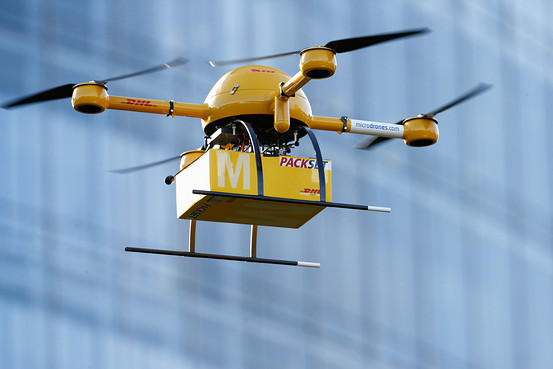Will drones ever be able to replace trucks?

Carrying out rescue tasks, supporting topographical work, organising aerial surveillance tasks, controlling fires, recording videos, taking photos... Since their appearance on the market, drones have proven their usefulness in all types of environments. But there is one solution for which they have not yet demonstrated their full potential: freight transport. What technical limits do they face to become an alternative to the delivery van?
The use of non-crewed aircrafts for this purpose has long been tested. In 2014, DHL became the first company to develop a regular delivery service. Since then, Amazon, Google and Alibaba have developed similar initiatives, but none of them have been as successful as expected.
The regulations, in any case, make the transport of goods unfeasible. Operations beyond the pilot's line of sight are heavily regulated or directly banned in some European countries,"says Martin Brandenburg, general manager of DJI Drone Company for Europe, Middle East and Africa. Not to mention that blowing up an aircraft in inhabited areas is still a chimera.
This does not detract from the fact that manufacturers are preparing drones for when legislation is more permissive. Because moving heavy loads is not easy. Higher payloads inevitably require longer battery life and larger vehicles.
Battery is the main concern for Griff Aviation, because it determines the time and weight a drone can lift. This Norwegian company develops drones capable of supporting 500 kilos and works on a model that could lift 800. The UK is providing €3 billion in public subsidies to investigate how to make batteries lighter, smaller and faster to charge, and it's not the only government doing so. They may not arrive next year, but it's only a matter of time.
The evolution in this field is very fast and it is likely that in a short time we will be talking about more minutes of autonomy for heavier loads. An alternative solution is also considered: readapting a real vehicle and eliminating the pilot. The reference is the military and state research institutes, which have been doing this for a long time.
It should be recalled that there is an added problem when putting a heavy goods distribution system into operation: the lack of security. In the short term, it is very difficult to put such powerful human and drones nearby. Ideally, a more conservative model would initially be ideal whereby drones could deliver packages to logistics centres with appropriate security measures and the structure needed to work with them. Once here, delivery to the customer would be carried out by hand.
Dron as a Taxi
The potential of drones to carry heavy loads has an even more controversial use case that sparks off the debate: the transport of people in their urban mobility needs.
EHang184 is a self-directed craft capable of transporting a passenger weighing up to 100 kilos for 30 minutes at 160 kilometres per hour. It consists of a metal and glass capsule equipped with eight propellers. The Cuban government announced that last summer this vehicle would be flying through the city's sky, but the launch forecasts have been extended until 2018, two years before the deadline Uber has imposed to launch his flying car.
EHang184 passengers will be transported on predetermined routes to be managed from a control tower. From here, air traffic will be directed and damaged vehicles will be prevented from flying.